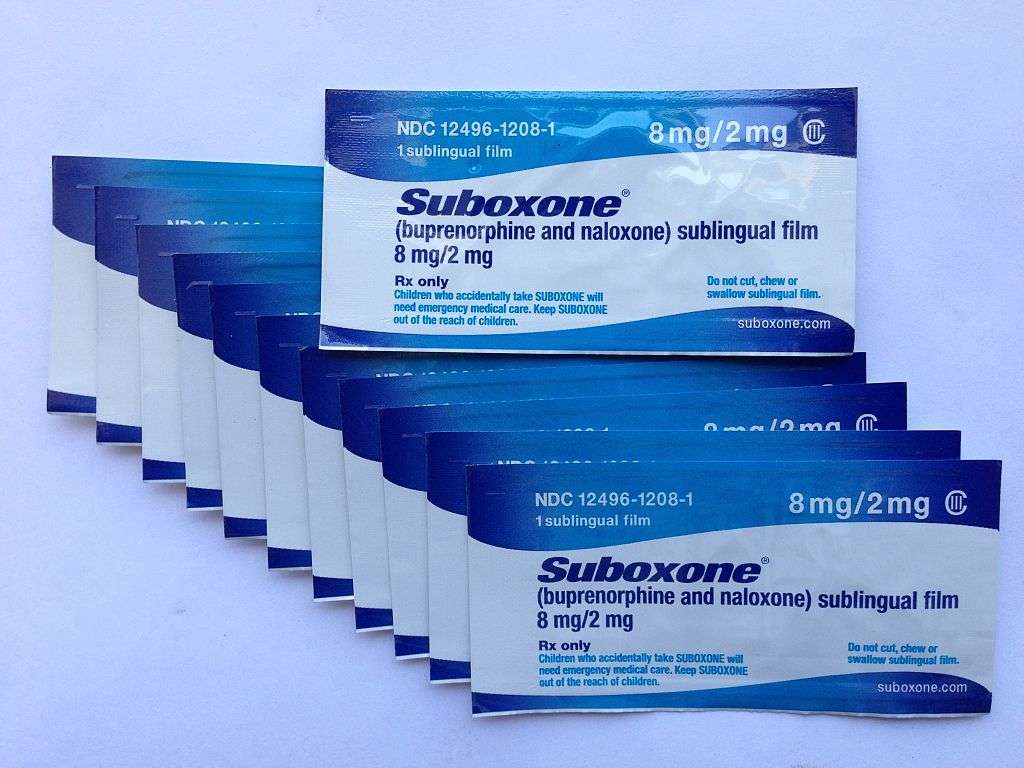The opioid crisis is a public health emergency that has had severe consequences on individuals, families, and communities around the world. Over the past two decades, the widespread misuse of prescription and illicit opioids has led to a dramatic increase in addiction, overdose deaths, and healthcare costs. The crisis has been exacerbated by the over-prescription of painkillers, the availability of potent synthetic opioids like fentanyl, and limited access to effective treatment options in many areas.
As a response, Suboxone, a combination of buprenorphine and naloxone, has become a crucial treatment option in the battle against opioid addiction. The rise of telemedicine in healthcare presents a unique opportunity to enhance the delivery and effectiveness of Suboxone treatment.
In this article, we will explore the role of telemedicine in Suboxone treatment, highlighting its potential benefits and challenges.


Discover the potential of telemedicine for Suboxone treatment in your recovery journey.
Schedule an appointment with us and embrace a new path towards overcoming opioid addiction.
What is Telemedicine?
Telemedicine refers to the use of information and communication technologies to deliver healthcare services remotely. It enables healthcare professionals to evaluate, diagnose, and treat patients from a distance, improving access to care, reducing costs, and enhancing patient outcomes. Telemedicine’s growing importance in healthcare has significant implications for Suboxone treatment. By offering remote consultations and follow-ups, telemedicine can help expand access to Suboxone treatment, particularly in rural or underserved areas, and improve the monitoring and management of patients undergoing MAT.
The Effectiveness of Telemedicine in Suboxone Treatment
Telemedicine offers numerous benefits in the delivery of healthcare services, and its application in Suboxone treatment is no exception:
1. Reaching rural and underserved areas
One of the primary advantages of telemedicine in Suboxone treatment is its ability to extend healthcare services to rural and underserved populations. Many rural communities face a shortage of healthcare providers, particularly those specializing in addiction treatment. Telemedicine can bridge this gap by connecting patients in remote locations with healthcare professionals who can provide essential support and guidance throughout the treatment process.
Telemedicine makes it possible for individuals in rural areas to access Suboxone treatment and medication-assisted therapy, leading to more equitable healthcare opportunities and better outcomes for those struggling with opioid addiction.
2. Reducing transportation barriers
In addition to increasing access to care for those in rural and underserved areas, telemedicine can also help overcome transportation challenges that often hinder patients from receiving the treatment they need. For individuals with limited mobility, a lack of reliable transportation, or financial constraints, traveling to in-person appointments can be burdensome and costly.
Telemedicine enables these patients to receive Suboxone treatment remotely, eliminating the need for travel and reducing the associated costs and stress. Telemedicine makes it easier for individuals to access and adhere to Suboxone treatment plans, improving the likelihood of successful recovery.
3. Enhanced communication between patients and healthcare providers
Telemedicine significantly improves communication between patients and healthcare providers in the context of Suboxone treatment. Through video conferencing, phone calls, or secure messaging platforms, patients can easily reach out to their healthcare providers to ask questions, discuss concerns, and receive guidance throughout their treatment journey.
This increased communication allows for more frequent check-ins and real-time support, fostering stronger patient-provider relationships and promoting better adherence to treatment plans. Enhanced communication also helps healthcare providers more effectively track their patients’ progress, enabling them to make timely adjustments to treatment plans when necessary and provide personalized care tailored to each patient’s needs.
4. Ongoing medication management
Medication management is a critical component of Suboxone treatment, as it helps ensure patients are taking the appropriate dosage of medication to support their recovery. Telemedicine can play a significant role in streamlining medication management by providing a platform for patients and healthcare providers to discuss and adjust medication dosages remotely.
Through regular virtual consultations, healthcare providers can monitor their patients’ response to Suboxone, evaluate the effectiveness of their current dosage, and make adjustments as needed. This ongoing medication management can lead to more effective treatment outcomes by reducing the risk of over- or under-medication and ensuring patients receive the optimal level of care.
5. Anonymity in telemedicine appointments
One of the major barriers to seeking help for opioid addiction is the stigma associated with the condition. Many individuals may feel embarrassed or ashamed to admit they need help, leading them to avoid treatment altogether. Telemedicine can help mitigate this stigma by offering a degree of anonymity during appointments. Patients can attend virtual consultations from the privacy of their own homes, reducing the likelihood of encountering acquaintances or judgment from others.
This anonymity can make patients feel more comfortable discussing their addiction and seeking support, contributing to a more open and honest dialogue with healthcare providers.
6. Encouraging more patients to seek help
By providing a private and discreet environment for Suboxone treatment, telemedicine can encourage more individuals to seek the help they need. The convenience and accessibility of telemedicine appointments make it easier for patients to fit treatment into their busy schedules and overcome logistical barriers that may have previously discouraged them from seeking care.
The reduced stigma and increased privacy afforded by telemedicine can help create a more supportive atmosphere for individuals grappling with opioid addiction, motivating them to take the first steps toward recovery.
7. Reduced overhead costs for healthcare providers
Telemedicine can lead to significant cost savings for healthcare providers involved in Suboxone treatment. By offering remote consultations, providers can minimize the expenses associated with maintaining physical office spaces, including rent, utilities, and staffing.
Additionally, telemedicine allows for more efficient scheduling and resource allocation, as healthcare providers can see more patients in a shorter amount of time compared to traditional in-person appointments. This increased efficiency can help reduce overhead costs while still providing high-quality care for patients struggling with opioid addiction.
8. Lower treatment costs for patients
Patients undergoing Suboxone treatment can also benefit from the cost-effectiveness of telemedicine. By eliminating the need to travel to in-person appointments, patients can save on transportation expenses and reduce the time spent away from work or other obligations. Moreover, telemedicine-based treatment can often be more affordable than traditional in-person care, as healthcare providers may pass on the savings from reduced overhead costs to their patients.
This lower cost barrier can make Suboxone treatment more accessible to a wider range of individuals, ensuring that financial constraints do not prevent those in need from receiving the help they require.


Begin your path to recovery and reclaim your life — one virtual appointment at a time.
Challenges and Limitations of Telemedicine in Suboxone Treatment
While telemedicine offers numerous benefits for Suboxone treatment, it is essential to acknowledge the challenges and limitations that can arise with its implementation. Understanding these obstacles can help healthcare providers and patients navigate the complexities of telemedicine and work together to overcome potential hurdles.
1. Limited access to reliable internet connections
One of the primary challenges of implementing telemedicine in Suboxone treatment is ensuring that both patients and healthcare providers have access to reliable and high-speed internet connections. In rural and underserved areas, where telemedicine can be most beneficial, internet connectivity may be limited or unreliable, hindering the quality and effectiveness of remote consultations. This can result in communication difficulties, dropped calls, and delays in treatment, potentially compromising patient care.
2. Difficulties in using technology among older or less tech-savvy patients
Some patients and healthcare providers may face difficulties in using the technology required for telemedicine. Older adults, for instance, may be less familiar with digital devices and platforms, making it challenging for them to navigate virtual consultations and access necessary information. Patients with cognitive impairments or disabilities may find it difficult to use technology effectively, creating potential barriers to receiving adequate care.
In these cases, it is crucial for healthcare providers to offer support and guidance to help patients become more comfortable with the technology and ensure they can access the care they need.
3. Inability to perform physical examinations
One of the concerns related to telemedicine-based Suboxone treatment is the inability to perform physical examinations. In some cases, an in-person assessment by a healthcare provider can provide valuable information that may not be obtainable through a virtual consultation. For example, a healthcare provider might need to examine a patient’s physical condition, such as observing signs of drug use or potential complications related to addiction.
While telemedicine has made great strides in allowing for remote assessments, it may not always be a suitable substitute for hands-on examinations, which could impact the quality of care provided.
4. Potential for misdiagnosis or mismanagement
Another concern regarding the quality of care in telemedicine-based Suboxone treatment is the potential for misdiagnosis or mismanagement of a patient’s condition. Although telemedicine enables healthcare providers to remotely evaluate patients and monitor their progress, the absence of in-person interactions may increase the risk of misinterpreting symptoms or overlooking critical information.
The limited ability to perform physical examinations may contribute to the potential for misdiagnosis or inadequate treatment management. To minimize these risks, it is essential for healthcare providers to exercise vigilance and maintain open lines of communication with their patients, ensuring that any concerns are promptly addressed and treatment plans are adjusted as necessary.
5. State-specific telemedicine regulations
One of the challenges faced by healthcare providers and patients in the implementation of telemedicine-based Suboxone treatment is navigating the complex web of state-specific telemedicine regulations. Different states have varying requirements for licensure, practice standards, and reimbursement policies, which can create confusion and make it difficult for healthcare providers to offer consistent, compliant care across state lines.
It is crucial for healthcare providers to familiarize themselves with the regulations in their state and the states where their patients reside to ensure they are providing care in accordance with the law.
6. Prescribing limitations for controlled substances
Suboxone, as a controlled substance, is subject to specific prescribing limitations that may impact the use of telemedicine for its administration. The Ryan Haight Act, for example, generally requires an in-person medical evaluation before a provider can prescribe controlled substances via telemedicine.
While there have been temporary changes to these regulations in response to the COVID-19 pandemic, it is essential for healthcare providers to be aware of the current prescribing limitations and ensure they are adhering to the necessary guidelines when providing Suboxone treatment via telemedicine.
7. Ensuring the protection of patient data
As telemedicine relies on the transfer of sensitive patient data through digital platforms, ensuring the security and privacy of this information is of paramount importance. Healthcare providers must take appropriate measures to protect their patients’ data, such as using encrypted communication channels, secure file storage, and robust access controls.
Failing to adequately safeguard patient data can lead to unauthorized access, breaches of privacy, and potential legal consequences, which can undermine patient trust and the overall effectiveness of telemedicine-based Suboxone treatment.
8. Preventing unauthorized access to sensitive information
In addition to protecting patient data, it is essential to prevent unauthorized access to sensitive information during telemedicine consultations. Healthcare providers must implement strict security measures, such as using secure video conferencing platforms, strong authentication protocols, and regularly updating software to address potential vulnerabilities.
By taking these precautions, providers can help ensure that their patients’ privacy is maintained and that their telemedicine consultations remain confidential and secure.
Addressing Challenges and Maximizing the Benefits of Telemedicine
Despite the numerous benefits of telemedicine for Suboxone treatment, various challenges must be addressed to ensure its success and widespread adoption. By focusing on solutions that help overcome these hurdles, healthcare providers can maximize the advantages of telemedicine and provide optimal care to patients struggling with opioid addiction.
Investing in telecommunication infrastructure
To overcome the technological barriers faced by patients and healthcare providers in telemedicine-based Suboxone treatment, it is vital to invest in telecommunication infrastructure. Governments, healthcare organizations, and private companies can collaborate to improve internet access, particularly in rural and underserved areas, ensuring that all patients have the opportunity to benefit from telemedicine services.
Developing user-friendly telemedicine platforms
Creating easy-to-use telemedicine platforms can help address the difficulties some patients and healthcare providers face when using technology. By developing intuitive interfaces, providing clear instructions, and offering ongoing technical support, telemedicine platforms can become more accessible to a broader range of users, enhancing their effectiveness in delivering Suboxone treatment.
Advocating for consistent regulatory frameworks
Streamlining and standardizing telemedicine regulations across states can help healthcare providers navigate the complex legal landscape and ensure they are providing compliant care. Advocacy efforts by professional organizations and healthcare providers can encourage lawmakers to create consistent regulatory frameworks that facilitate the implementation of telemedicine-based Suboxone treatment while maintaining high standards of care.
Implementing robust data security measures
Addressing security and privacy concerns is crucial to build trust in telemedicine services. Healthcare providers and telemedicine platform developers must prioritize the implementation of robust data security measures, such as encryption, secure storage, and strict access controls, to protect sensitive patient information and maintain patient confidentiality.
Combining telemedicine with in-person care
To maximize the benefits of telemedicine in Suboxone treatment while addressing its limitations, healthcare providers can employ a hybrid approach that combines virtual consultations with in-person care. This approach allows patients to receive the convenience and accessibility of telemedicine while still benefiting from hands-on examinations and in-person support when necessary. By striking a balance between remote and traditional care, healthcare providers can ensure they are delivering comprehensive, high-quality treatment for patients struggling with opioid addiction.


Conclusion
The role of telemedicine in Suboxone treatment holds great promise for combating the opioid crisis and making addiction treatment more accessible to those in need. While challenges exist, addressing these concerns through investment, innovation, and collaboration can pave the way for a brighter future in addiction care. As we continue to navigate the evolving landscape of telemedicine, let us remain committed to seeking solutions that empower patients and healthcare providers to work together towards recovery and a healthier society.
Interested to learn more? Read more related articles: The Use of Suboxone for Pain Management
Contact National Addiction Specialists For Your Suboxone Treatment
National Addiction Specialists is here to help and support you if you are struggling with opioid addiction.
You can use your phone, tablet, or computer to chat and speak with a doctor in the comfort of your own home. You’ll receive your individualized treatment plan and continue to receive telemedicine care up until you reach full recovery.
Get in touch with us to start taking steps to beat your opioid addiction.
References:
https://www.liebertpub.com/doi/10.1089/tmj.2021.0308
https://clinicaltrials.gov/ct2/show/NCT04521920
https://www.ncbi.nlm.nih.gov/pmc/articles/PMC9283820/
https://www.healthline.com/health-news/can-telehealth-can-help-with-addiction-treatment












